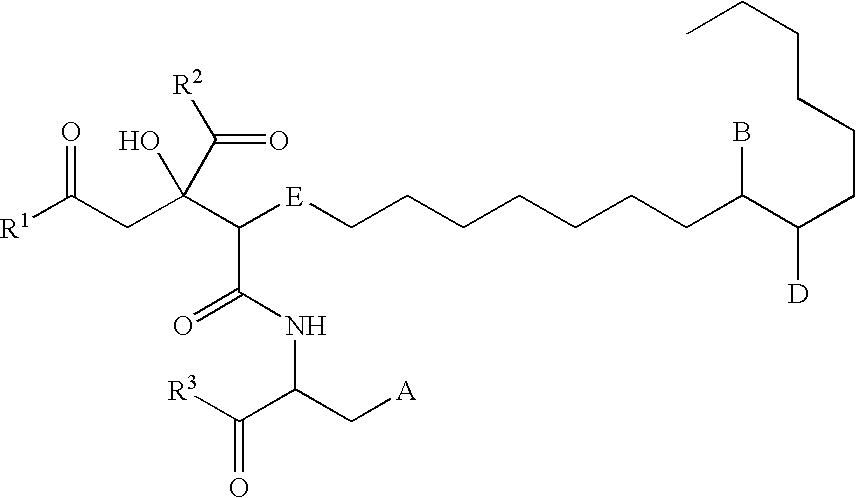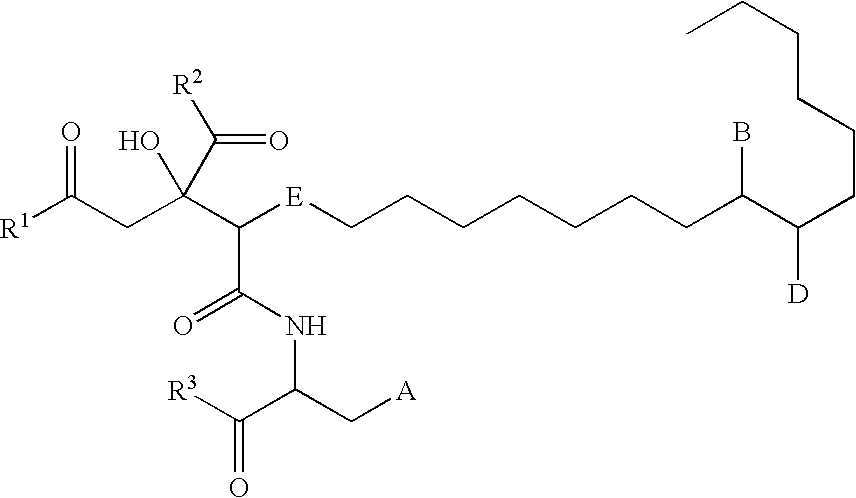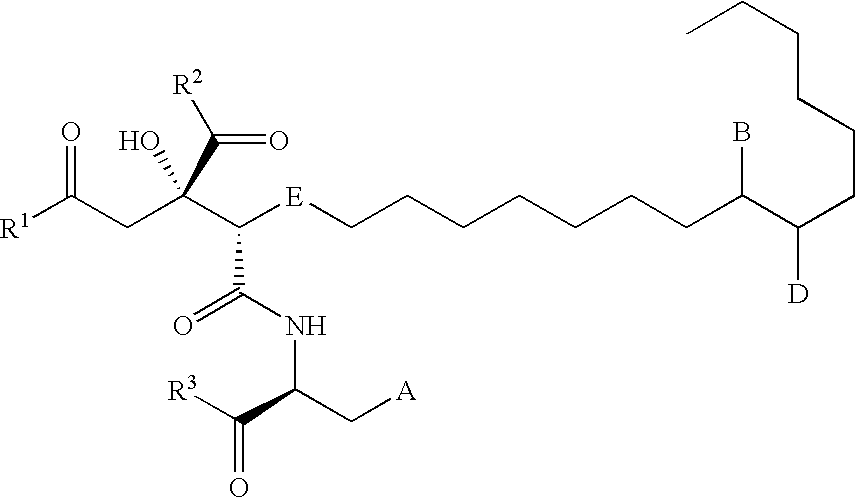Remedy for viral disease
a viral disease and drug technology, applied in the field of viral disease treatment, can solve the problems of low efficacy of interferon against hcv genotype 1b in particular, only in about one-third of patients, and none of these have been found to be effective, and achieves mild cytotoxicity, inhibits hcv proliferation, and anti-hcv replicon activity.
- Summary
- Abstract
- Description
- Claims
- Application Information
AI Technical Summary
Benefits of technology
Problems solved by technology
Method used
Image
Examples
example 1
[0115] Strain F1476 used in the present invention is a filamentous fungi that was isolated by washing and filtration on Feb. 29, 2000 from fallen leaves collected at the southern slope of Kamakurayama in Kamakura, Japan on Jan. 24, 2000.
[0116] Culturing Properties
[0117] Growth on potato dextrose agar (PDA) is slow, the organisms reach a diameter of 12 mm after 10 days of irradiation with near ultraviolet light at 25° C., the growth rate is 1.5 to 1.6 mm per day, the organisms form dense mycelial flora, the surfaces are undulated and raised, moist conidiospore bases gather in the center, prominently flocculated clumps of hypha are occasionally formed on the periphery, the color is light orange (apricot, Light orange, Light Apricot to Apricot, Munsell 5YR7 / 6 to 7 / 10, Metuen 6A6 to 6B8), and the back surface color ranges from light orange to orange (light orange, bright reddish orange, Tiger Lily, Munsell 5-10YR7 / 10, Metuen 6B8 to 8A6).
[0118] The growth rate is slightly poor in dark...
example 2
[0133] One loopful of microorganisms obtained from a slant culture of strain F1476 was inoculated into 25 500 ml-Erlenmeyer flasks with baffles containing 100 mL of liquid media (2% glucose, 1.5% glycerol, 1% potato starch, 0.25% polypeptone, 0.35% yeast extract, 0.5% calcium carbonate, 0.3% sodium chloride, 0.005% zinc sulfate heptahydrate, 0.0005% copper sulfate pentahydrate, 0.0005% manganese sulfate tetrahydrate and 1% toasted soya), followed by shake culturing at 25° C. for 3 days (shaking rate: 220 rpm) to obtain an inoculated culture seed. 16 mL of this inoculated culture seed was inoculated into 125 500 ml-Erlenmeyer flasks with baffles containing solid media (40 g pressed barley, 24 mL SF1 solution (0.1% yeast extract, 0.05% sodium tartrate, 0.05% potassium dihydrogen phosphate)), followed by stationary culturing at 25° C. for 11 days. 12.5 L of n-butanol was then added to the culture cultured in this manner followed by allowing to stand overnight and then filtering to obta...
example 3
[0143] One of the fractions obtained in Example 2 (Fraction 2, 345 mg) was further subjected to preparative high performance liquid chromatography under Conditions 2 indicated below to separate into a fraction containing Compound 2 (Fraction 2-1, 41.4 mg) and a fraction containing Compound 3 (Fraction 2-2, 4.9 mg). Fraction 2-1 was further subjected to preparative high performance liquid chromatography under Conditions 3 shown below to obtain a fraction containing Compound 2. The resulting fraction was concentrated under reduced pressure to obtain 29.5 mg of Compound 2 in the form of a white powder. Similarly, Fraction 2-2 was subjected to preparative high performance liquid chromatography under Conditions 4 to obtain 3 mg of Compound 3 in the form of a white powder.
[0144] Conditions 2 of High Performance Liquid Chromatography
[0145] Instrument: CCPP-D, MCPD-3600 System (Tosoh)
[0146] Column: CAPCELL PAK C18 (UG 80, 20 mm×250 mm) (Shiseido)
[0147] Mobile phase: Solvent gradient elu...
PUM
| Property | Measurement | Unit |
|---|---|---|
| Composition | aaaaa | aaaaa |
| Pharmaceutically acceptable | aaaaa | aaaaa |
Abstract
Description
Claims
Application Information
 Login to View More
Login to View More - R&D
- Intellectual Property
- Life Sciences
- Materials
- Tech Scout
- Unparalleled Data Quality
- Higher Quality Content
- 60% Fewer Hallucinations
Browse by: Latest US Patents, China's latest patents, Technical Efficacy Thesaurus, Application Domain, Technology Topic, Popular Technical Reports.
© 2025 PatSnap. All rights reserved.Legal|Privacy policy|Modern Slavery Act Transparency Statement|Sitemap|About US| Contact US: help@patsnap.com



